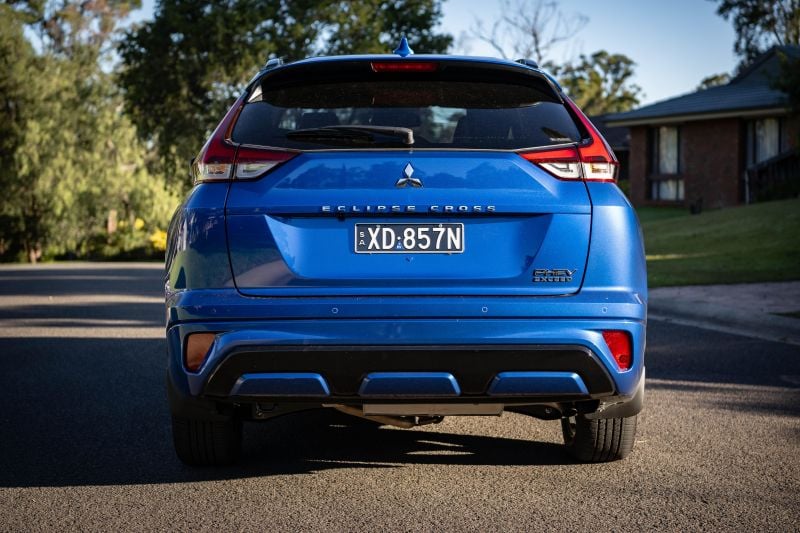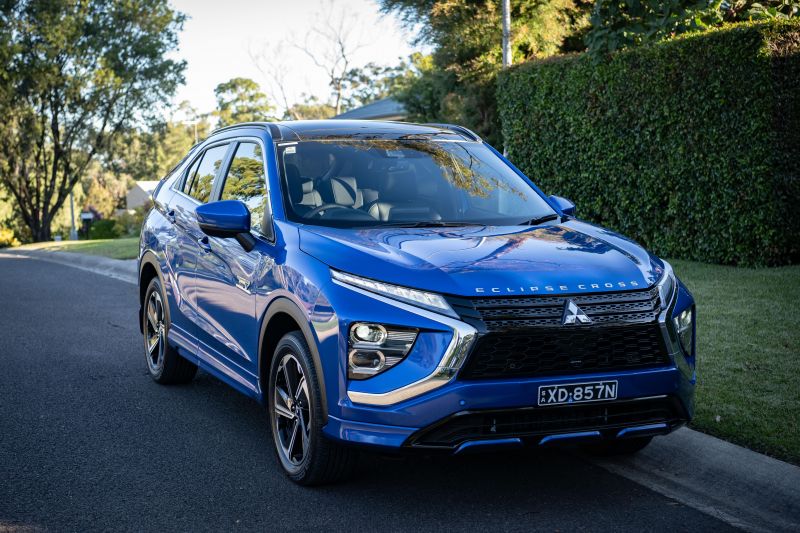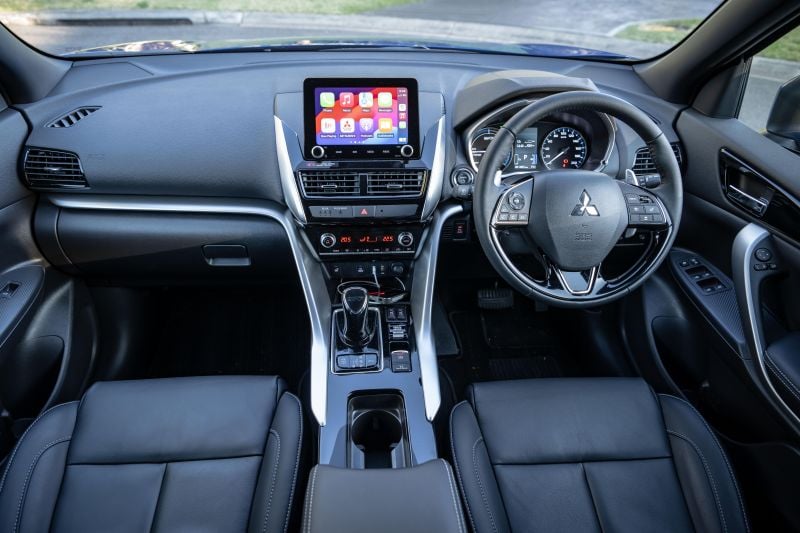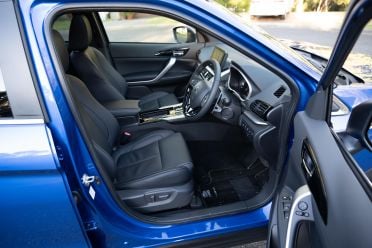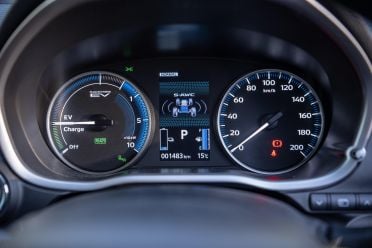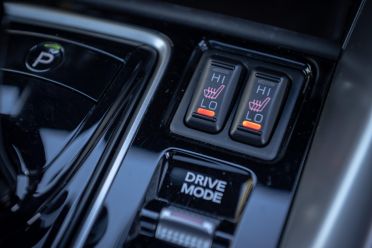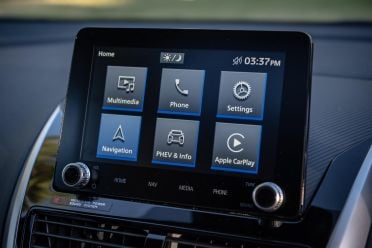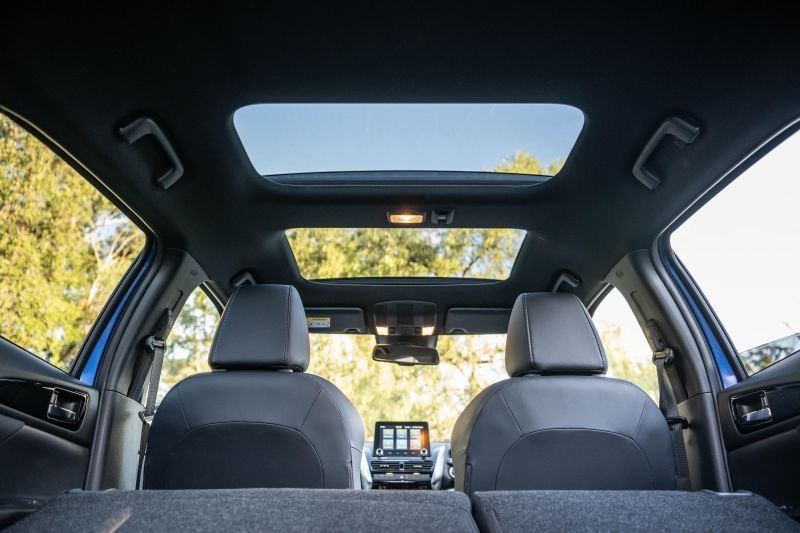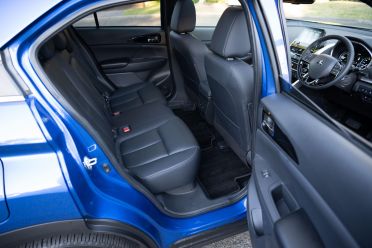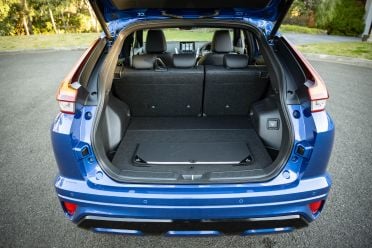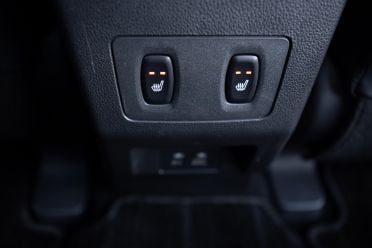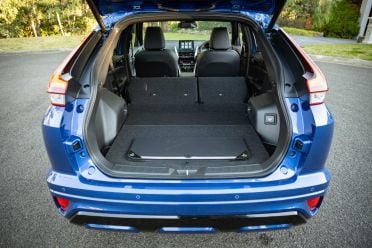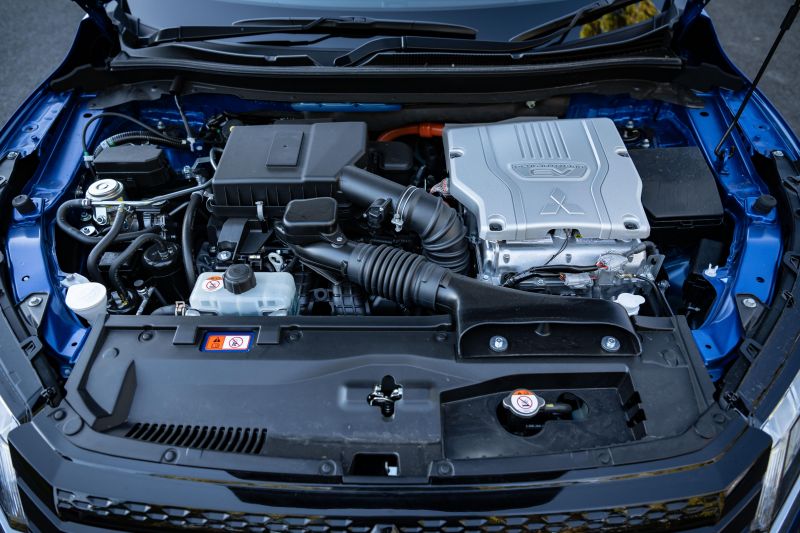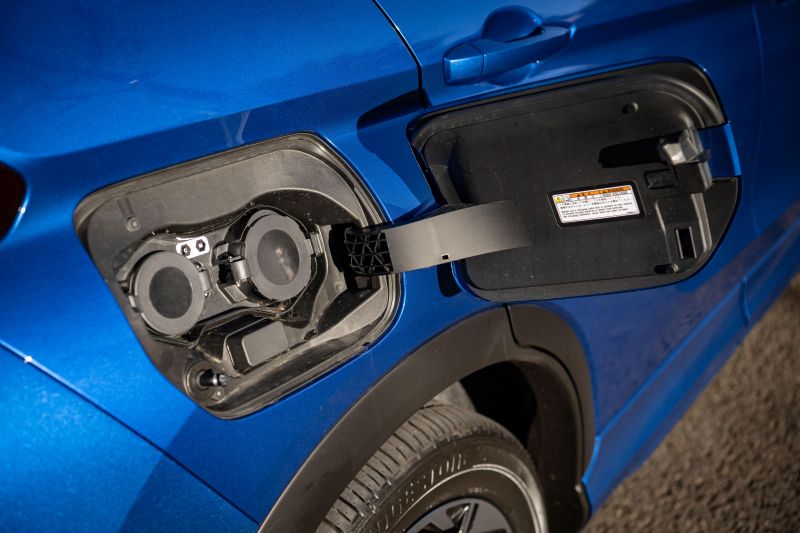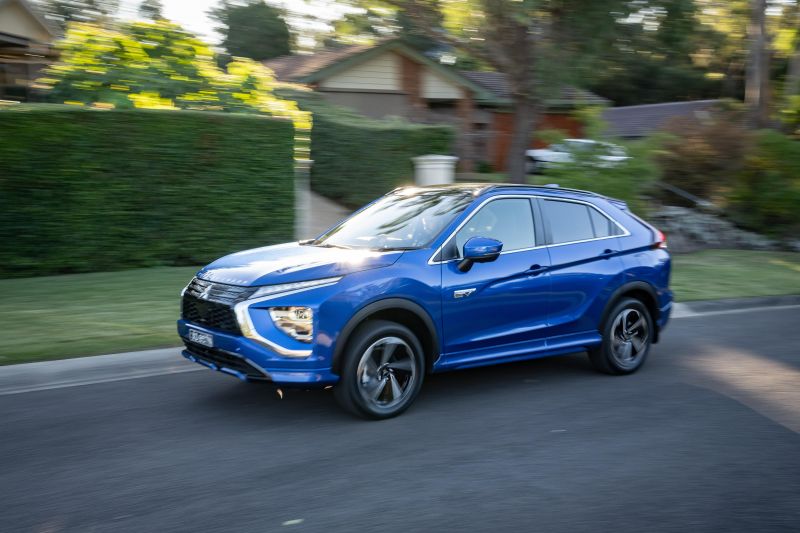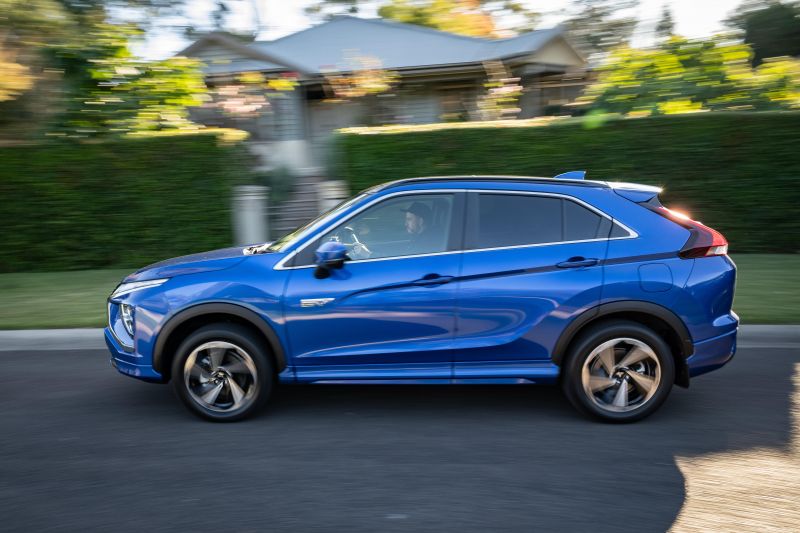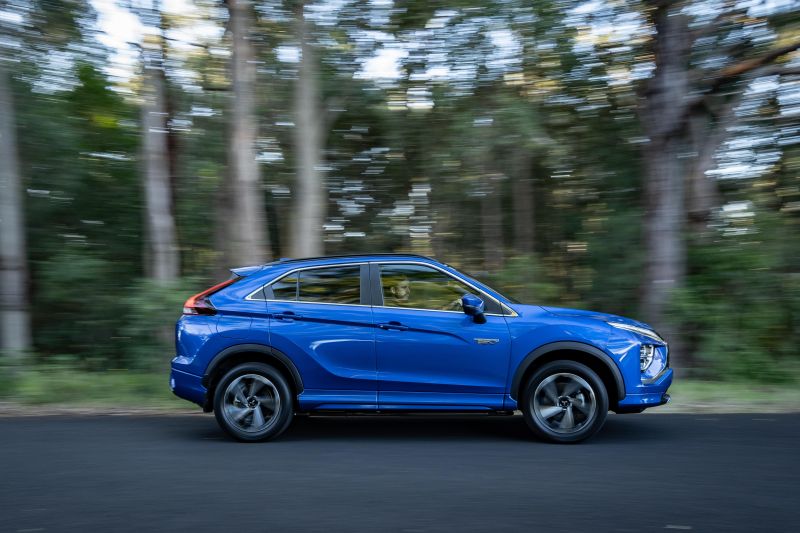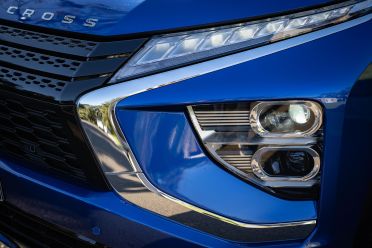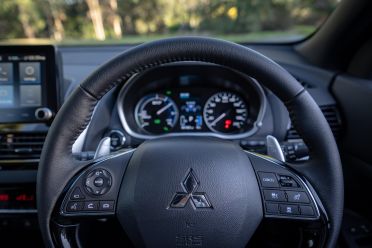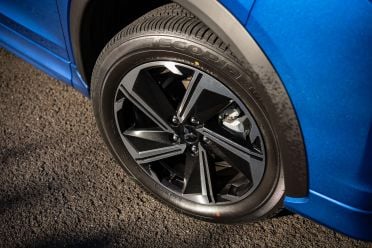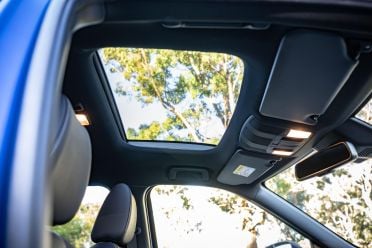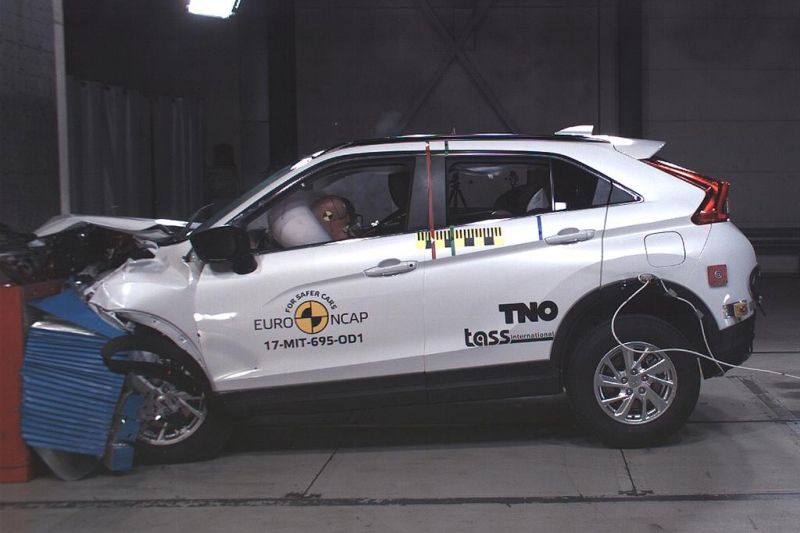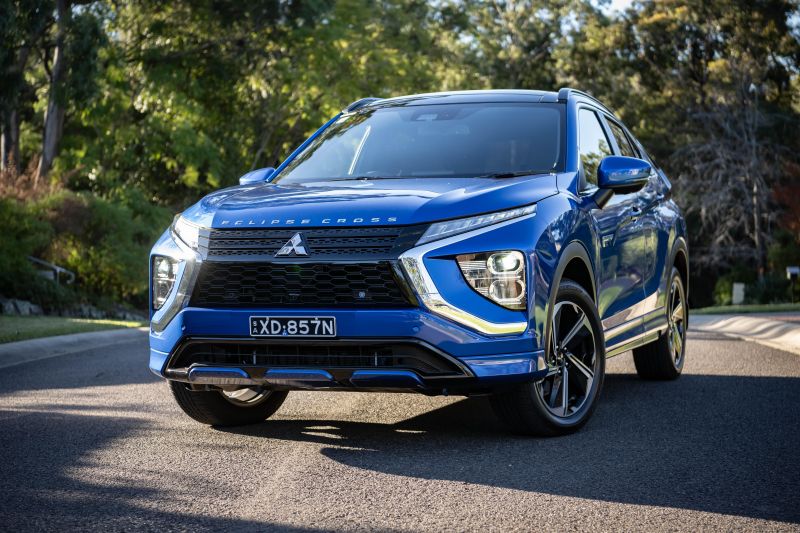The Mitsubishi Eclipse Cross Plug-In Hybrid EV range was an important addition to the Australian automotive landscape, as it was the first PHEV in its class and remains one of few small SUVs with the tech available.
But with increasing competition from larger SUVs with more assertive pricing and better tech, and with full EV models now more affordable than ever before, does this PHEV still make sense as one to look at?
It has plenty of positive attributes, and there are deals to be done for the tax-savvy buyer, too. Let’s cover all the stuff you need to know.

How much does the Mitsubishi Eclipse Cross cost?
For buyers who aren’t so sold on the PHEV thing, the turbo-petrol models – which are significantly cheaper – might make more sense. The MY24 range has seen a $500-across-the-board increase, too.
| Model Variant | $RRP |
|---|---|
| 2024 Mitsubishi Eclipse Cross ES FWD | $31,990 |
| 2024 Mitsubishi Eclipse Cross LS FWD | $34,740 |
| 2024 Mitsubishi Eclipse Cross LS Black Edition FWD | $35,990 |
| 2024 Mitsubishi Eclipse Cross Aspire FWD | $36,990 |
| 2024 Mitsubishi Eclipse Cross LS AWD | $37,240 |
| 2024 Mitsubishi Eclipse Cross Exceed FWD | $40,990 |
| 2024 Mitsubishi Eclipse Cross Exceed AWD | $43,490 |
| 2024 Mitsubishi Eclipse Cross Plug-in Hybrid EV ES AWD | $47,790 |
| 2024 Mitsubishi Eclipse Cross Plug-in Hybrid EV Aspire AWD | $51,740 |
| 2024 Mitsubishi Eclipse Cross Plug-in Hybrid EV Exceed AWD | $56,490 |
Yes, the premium to get into a PHEV is arguably ludicrous. It doesn’t make sense to spend $13,000 more to save fuel, but if you’re dedicated to electrifying your lifestyle, and you really think that having about 55km of EV driving range and then being able to rely upon a petrol engine might be suitable for you, then that’s cool.
And there are huge financial benefits for buyers who are willing to go for a plug-in hybrid vehicle like this: until March 31, 2025, Australians will not have to pay Fringe Benefits Tax (FBT) on a lease for a car like this, and that could mean savings of thousands of dollars.
But that also applies to competitor models that are fully electric (with no current expiry date on the offer), and also other PHEVs.
To see how the Eclipse Cross lines up against the competition, check out our comparison tool.
What is the Mitsubishi Eclipse Cross like on the inside?
It’s not the newest feeling cabin. In fact, it’s a really old feeling cabin by current standards.
And if you’re stepping out of a 15-year-old Lancer or something, it’s going to feel lightyears ahead, but there are elements which are somewhat dated.
Primarily I’m talking about the displays, with a small digital component to the driver cluster (alongside an analogue speedo and a EV meter), which doesn’t have a digital speedo as part of it.
Yes, there is a flip-up head-up display with a digital speedo in this spec, but not the lower grades. Newer rivals have digital instrumentation, which certainly feels more like a high-tech experience than what’s on offer here.
Same goes for the 8.0-inch touchscreen, which does have sat nav, AM/FM and DAB radio, USB media and Apple CarPlay and Android Auto (both USB cable connect only).
While I like the simplicity of the unit, and the fact it has buttons to jump between menus and dials for tuning/track and volume, it isn’t quite the cutting-edge of infotainment tech.
But it does have more functionality than just a media controller – there is also a heap of driving info available, and you can preset charge times there as well.
It also acts as the display for a surround-view camera system, but the lens quality is poor and as a result the image display is fuzzy.
As for the finishes and materials, nothing has really changed since this generation of Eclipse Cross came out, so it doesn’t feel any newer than it did a few years ago.
While that might be fine for someone with more traditional tastes, newer models have far more flashy interior design and innovative materials and finishes.
Suffice to say, you’ve got leather-accented seats and a bit of piano black, but no ambient lighting or funky textures to the plastics.
There isn’t a wireless phone charger, either, which is disappointing, and between the seats there are cup holders and a covered console, plus the doors have decent bottle holsters.
The twin sunroof design of the Exceed is a nice touch, and with the shade open for the rear glass it feels reasonably airy – but with it closed, it’s a bit cave-like.
Otherwise the back seat experience is okay, so long as you’re fine to go without directional air-vents. It’s a pretty compact cabin so air-flow is fine from the front, but I wouldn’t want to be in there on a really hot day.
Now, there are heated outboard seats for cooler days, and you get map pockets on the seatbacks and bottle holders in the doors, but there is no flip-down armrest and therefore no cupholders.
Parents – there are ISOFIX points in the window seats and three top tether points, too. Mind, the middle seatbelt is one of those ones that comes from the boot area, which can make for fiddly times when folding the seats down for the IKEA run.
The boot capacity is 359L with the rear seats up for the PHEV, and 626L when they’re folded. There’s no spare wheel under the boot floor, just a tyre repair kit and a spot to fit your charge cables – which are free in this grade, but not the cheaper PHEVs…
Non-hybrid versions of the Eclipse Cross have 405L of cargo space, expanding to 1149L when the rear seats are folded in front-wheel-drive variants, or 1172L in the all-wheel-drive.
What’s under the bonnet?
We’re focusing on the PHEV here, whcih uses a non-turbocharged 2.4-litre four-cylinder petrol engine with 94kW of power and 199Nm of torque.
It combines with two electric motors – one on the front axle (60kW/137Nm) and one on the rear (70kW/195Nm).
Mitsubishi’s ‘Super-All Wheel Control’ all-wheel drive system distributes the petrol engine and electric motor’s power to all four wheels as required, and it has a single-speed transmission to manage propulsion duties.
The PHEV system also incorporates a 13.8kWh lithium-ion battery pack, capable of AC charging (Type 2 plug, up to 3.7kW) and DC charging (CHAdeMO plug, up to 22kW).
The battery has a maximum EV driving range of 55km (NEDC claim), and being a PHEV, it has a somewhat misleading fuel efficiency rating of just 1.9 litres per 100km.
That will only be possible (if at all) for the first 100km, after which the battery is depleted and you will rely on the petrol engine more. Check out the next section of this review for a rundown on what I saw in real-world driving.
The driver can choose to activate EV driving mode via a button near the shifter, and there is a Battery Save mode (which will use the petrol engine primarily and maintain the battery level), as well as a Battery Charge modes (which will use the petrol engine to top up the battery).
You can set charge timers using the infotainment screen too, which is a nice touch. Some cheap EVs don’t even have that.
Unbraked towing capacity is 750kg across the range. ICE models are rated to 1600kg for braked towing, while PHEV models are capped at 1500kg.
Oh, and if the PHEV doesn’t sound right for you, there’s a 1.5L turbo-petrol four-cylinder with 110kW/250Nm, a CVT auto, and the choice of FWD or AWD.
How does the Mitsubishi Eclipse Cross drive?
First off, let’s talk about the EV and hybrid stuff.
I did a fully charged drive first off, with a mainly highway and freeway-focused trip, and achieved 48km of range before the petrol motor kicked in. It was 20 degrees and fine that day, and the roads were mainly flat.
I then did another drive around my place in the Blue Mountains, and got just 22km of range on a cold day with more undulating terrain to contend with. Just 13 degrees that day, too, but the screen still had “55km range” when I set off.
I then did a final charge and EV drive back into the city, where I saw 51km of EV range. It was 16 degrees Celsius by the readout, and flatter roads on the freeway.
It really is significantly impacted by terrain and temperature, this battery system.
But it is a smooth operator in EV driving, and the transition between electric and hybrid/petrol driving is silky, too. You can hear the engine kick into life, but it’s not coarse or rough in its activation.
There’s no hard-revving behaviour because it’s not a CVT auto, and overall it has a really likeable manner to it when it comes to the powertrain. It’s not super fast, but it’s fast enough.
There is a regenerative braking system that can be adapted in its responsiveness by the paddle-shifters, and even in its most assertive mode it’s not like other electrified cars – you cannot drive it just using the accelerator, and the regen is definitely on the lighter side.
At least the pedal feel is good, without that airy sensation at the top of the pedal that you get in some other electrified cars.
Look, those thinking they’ll get their thrills from a midsize Mitsubishi SUV are misled, because it’s not overly joyful to drive. It has decent enough steering, but it’s just slow to react on-centre, meaning it feels like the car has a longer nose than it does.
And while the suspension isn’t offensive in terms of the ride comfort in most situations, sharp edges can upset the balance, and there’s some rolly poly action in corners, too.
At least it has all-wheel drive (and a selection of drive modes to suit that, including Snow, Gravel, Tarmac, Normal and Eco), so you’ve got sure-footedness in slippery situations.
One other thing? There’s a fair amount of wind noise intrusion above 80km/h.
So I didn’t love driving this, but I did like the gamification of trying to get as much out of the battery as I could, even if it was Game Over too soon in a few different situations.
All told, my ‘hybrid’ driving saw a displayed fuel use figure of 6.5L/100km, not much better than most other small SUVs across similar terrain, and worse than a Skoda Kamiq or Toyota Corolla Cross, in fact.
What do you get?
It’s important to consider the entire range when deciding if the high-grade makes the most sense for the money.
Eclipse Cross ES standard equipment:
- 16-inch alloy wheels
- LED daytime running lights
- Automatic headlights
- Rear LED fog lamp
- Soundproof windshield glass
- Rain-sensing wipers
- Black fabric upholstery
- Climate control air-conditioning
- 8.0-inch touchscreen infotainment system
- Apple CarPlay, Android Auto – wired
- 4-speaker sound system
- Tilt and telescopic steering column adjustment
- Cruise control
- Keyless entry
Eclipse Cross PHEV ES adds:
- Illuminated front door trim
- Leather-wrapped steering wheel
- Rear centre armrest with cupholders
- Electric park brake
- Mode 2 charging cable
- Mode 3 charging cable
- Acoustic vehicle alert system
Eclipse Cross LS gains – over ES:
- 18-inch alloy wheels
- LED front fog lights
- Automatic high-beam
- Privacy glass
- Power-folding exterior mirrors
- Electric park brake with auto hold
- 6-speaker sound system
- Rear USB-A and USB-C outlets
- Electrochromatic rear-view mirror
Eclipse Cross LS Black Edition adds:
- Black 18-inch alloy wheels
- Gloss black mirrors, skid plates
- Mi-suede and synthetic leather upholstery
- Black dimpled leather-wrapped steering wheel with grey stitching
- Black headliner, pillar trims
- 4-way power driver’s seat
- Heated front seats
- PVC leather door cards
- Grey stitching details
- Silver garnishes on instrument panel, centre console sides, door grips
Eclipse Cross Aspire gains – over LS:
- Gloss black front and rear skid plates
- Black grille
- Mi-suede and synthetic leather upholstery
- Dual-zone climate control
- 8-speaker sound system with four tweeters
- 4-way power driver’s seat
- Heated front seats
Eclipse Cross PHEV Aspire adds:
- Automatic LED headlights
- Roof rails
- Silver front lower bumper
- Black front bumper centre garnish
- Black grille insert
- Black and insert rear lower bumper
- Black side door garnish
- 1500-watt V2L capacity
Eclipse Cross Exceed + PHEV Exceed gain:
- LED headlights
- Hands-free power tailgate
- Heated steering wheel
- Head-up display
- Dual sunroofs
- Four-way power-adjustable passenger seat
- Heated rear seats
- Satellite navigation
- Black or light grey leather upholstery
Is the Mitsubishi Eclipse Cross safe?
As of January 2024, the Mitsubishi Eclipse Cross is no longer rated by ANCAP – the old five-star score has expired.
Even so it does have an array of standard safety tech across the range:
- 7 airbags incl. driver’s knee
- AEB with pedestrian detection
- Lane departure warning
- Reversing camera
- Rear parking sensors
LS and above add:
- Blind-spot monitoring
- Rear cross-traffic alert
Aspire and above add:
- Adaptive cruise control
- Front parking sensors
- Surround-view camera
Exceed grades also add Mitsubishi’s Ultrasonic Misacceleration Mitigation System, which is designed to stop the car when it detects the accelerator has been pressed instead of the brake at low speeds.
How much does the Mitsubishi Eclipse Cross cost to run?
Mitsubishi offers a five-year/100,000km warranty in Australia, but there is a conditional extended warranty if you maintain your car with the brand’s workshops. In that instance, you’ll get a 10-year/200,000km warranty.
That might make a lot of sense for you, but you need to know that you’ll be paying for the privilege.
In fact, the service costs over the 10-year capped-price servicing plan are comparatively high. The average over that period is $594 per service, with intervals set every 12 months or 15,000km.
You get four years of roadside assistance, too.
CarExpert’s Take on the Mitsubishi Eclipse Cross
The Mitsubishi Eclipse Cross PHEV is far more impressive in retrospect than it is in the current climate.
If you can get a sweet deal and take advantage of that FBT exemption, it may well be a strong choice over some of the other small SUVs out there.
But other PHEVs are better for less money, and there are ICE options that stack up convincingly, too.
Click the images for the full gallery
MORE: Buy a Mitsubishi Eclipse Cross
MORE: Everything Mitsubishi Eclipse Cross





